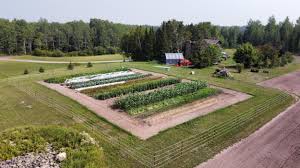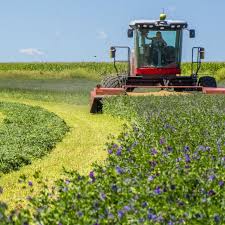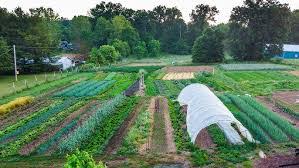In this article, the organization of the farm set-up is discussed. Success in farming as an ongoing and viable venture requires that the farmer organizes the farm from the onset into an efficient business unit by applying sound principles of farm management to every aspect of the farm. This article provides insights into how to set up a farm effectively.
Selection of the Farm
Whether dealing with a farm settlement scheme, a cooperative farm, or an individual farm unit, the selection of farmland is crucial. The productivity of every farm and the cost of marketing the output are directly related to the choice of land.
Therefore, when selecting a farm, the decision-maker should carefully consider the following factors:
i. The climatic conditions.
ii. The soil type, fertility, and drainage conditions.
iii. The amount of waste land that cannot be reclaimed.
iv. Distance from the market, home, and water supply.
v. Condition of roads and distance from highways.
vi. Condition of improvements on the farm.
vii. The clearing cost.
Read Also: 14 Medicinal Health Benefits of Epimedium grandiflorum (Horny Goat Weed)
Distribution of Investments

In farm organization, the proper distribution of investment expenditure is fundamental to the success of the farm. This problem naturally follows the question of farm selection. The farmer must consider three fundamental factors of production: land, labor, and capital, as well as their proper adjustment to meet changing economic conditions such as changes in land values, labor costs, and the cost of materials and equipment.
The three factors of production in any farm business can be analyzed as follows:
1. Land: The farm manager must consider the location of the land, the quality of the soil, and the advantages and disadvantages of the climatic factors associated with the land.
2. Labor: The farmer, as the manager of the farm, should create a schedule that allows for the most efficient use of labor. The mode of payment for work done on the farm should also be considered, whether it is a fixed sum per period, payment based on hours worked, or payment by results.
3. Capital: Proper farm organization for successful farming revolves around questions such as:
i. What combination of capital and labor will bring the highest efficiency and profit?
ii. What is the proper proportion of fixed and working capital to secure the greatest efficiency and profit?
iii. What minimum level of social overhead capital is needed for agricultural production to be profitable?
Farm Layout

Planning the layout of the farm naturally falls under three divisions:
1. Layout of the Farmstead: The farmstead is the part of the farm occupied by the house, barn, and other buildings, along with the garden and adjacent yards.
2. Layout of the Farm Buildings: This includes the capacities of different buildings and their interior arrangements.
3. Layout of the Fields: This involves the arrangement of fields for crop production.
The following general principles may serve as guidelines for farm managers in planning the farm layout:
i. The practical farm manager should develop a layout that provides the required building capacity, the most convenient and efficient interior arrangement, and a field layout that is easily accessible from the farmstead. The layout should also conform to the size of the farm and the distribution of desired crops.
ii. If the land is uniformly of good quality, the farmstead should be centrally located to provide easy and direct access to the fields. This saves time and effort for the farmer and his team. However, if there are rocky or stony patches, the farmstead may best be located in these areas to make the good soil available for crop production.
iii. When dividing the farm into fields, consideration should be given to the size and shape of the fields, the presence of rocky or unusable patches, and the number of fields required.
Selection of Enterprises
In selecting crop and livestock enterprises, two sources may provide guidance to the farmer:
1. Research and Experimental Studies: These provide information on soil types, vegetation, pests, rainfall, temperature, and other biological and agroclimatic factors that determine the types of crops that can be grown in a specific area.
2. Experience of Successful Farmers: Successful farmers in the area have knowledge of the most efficient patterns of farm organization and operation. They also understand the problems of demand, marketing, and distribution of farm crops and livestock and how to address these issues to build a viable and profitable farm business.
Read Also: 10 Medicinal Health Benefits of Podocarpus henkelii (Henkel’s Yellowwood)
Distribution and Adjustment of Enterprises

After selecting enterprises, the next question is determining the optimum combination. This problem can be approached in two ways:
1. Intuitive Method: This ensures that the ultimate farm plan includes enterprises that meet the following requirements:
i. A good distribution of labor.
ii. Conservation of soil fertility.
iii. Flexibility to increase the production of crops that become more profitable.
iv. A balance between food and cash crops.
2. Formal Farm Planning Tools: These include budgeting, empirical production functions, and programming techniques to determine the optimal enterprise combination.
This article has discussed the factors to consider in organizing a farm set-up. Proper farm organization involves selecting the right land, distributing investments wisely, planning the farm layout, selecting suitable enterprises, and determining the optimal combination of these enterprises. By applying sound principles of farm management, farmers can establish efficient and profitable farm businesses.
Do you have any questions, suggestions, or contributions? If so, please feel free to use the comment box below to share your thoughts. We also encourage you to kindly share this information with others who might benefit from it. Since we can’t reach everyone at once, we truly appreciate your help in spreading the word. Thank you so much for your support and for sharing!
Read Also: Six Health Benefits of Sugarcane Juice






